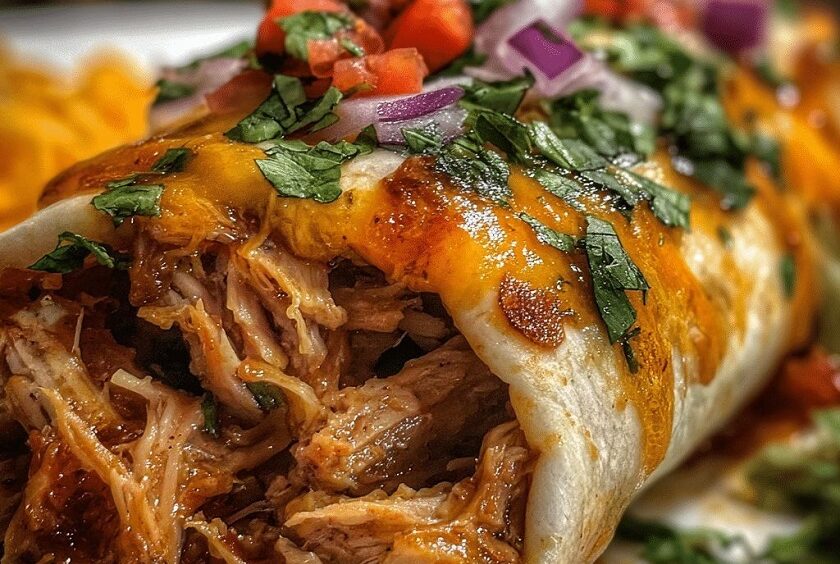Introduction
Imagine strolling down a bustling street, the air filled with the enticing aroma of sizzling meats, fresh herbs, and spicy salsas. The sound of laughter and chatter surrounds you, and all around, vibrant food carts are serving up delicious creations. This is the magic of Mexican street food, an experience that goes beyond just eating—it’s about immersing yourself in a rich cultural tradition. Whether you’re in the heart of Mexico or the USA, Mexican street food brings a taste of authenticity, comfort, and excitement to every bite.
Over the past few years, Mexican street food has exploded in popularity across the United States. From food trucks in cities like Los Angeles to trendy street food stalls in New York, it’s clear that Americans have developed a deep love for this flavorful, vibrant cuisine. The reason for this surge is simple: Mexican street food is not just food—it’s an experience. It’s a reflection of Mexico’s rich cultural heritage, passed down through generations, and now reimagined in every corner of the world.
For those who haven’t yet indulged, there’s a whole world of bold flavors waiting to be explored. Mexican street food has captured hearts in the USA, bringing together diverse communities in shared enjoyment of these unforgettable flavors.
So, why should you fall in love with Mexican street food? In this article, we’ll dive into 7 compelling reasons why Mexican street food has become a beloved culinary experience in the USA. From its authenticity and variety of flavors to its affordability and social atmosphere, Mexican street food offers something for everyone. Get ready to explore how this delicious food connects people, excites taste buds, and creates memories that last a lifetime.
What is Mexican Street Food?
Definition & Overview:
Mexican street food is a vibrant, essential part of Mexico’s culinary culture, offering an authentic and flavorful experience on the go. Street food in Mexico typically consists of simple yet delicious dishes prepared and sold by vendors on the streets, at markets, or outside restaurants. These foods are usually quick to make, affordable, and packed with bold flavors that reflect the diverse regional tastes of Mexico. What makes Mexican street food so special is the use of fresh, locally sourced ingredients and traditional cooking methods, many of which have been passed down through generations.
Unlike more formal restaurant meals, Mexican street food is all about creating a genuine and hands-on experience for both the eater and the vendor. Popular choices include tacos, quesadillas, tamales, tortas, and elote—each offering its own unique combination of flavors, textures, and ingredients.
The origins of Mexican street food date back to ancient times, with indigenous peoples crafting street-side dishes using corn, beans, chili, and other locally grown foods. Over the centuries, these early meals evolved, influenced by Spanish colonization and the many diverse regions within Mexico. From bustling markets in Mexico City to the quiet countryside, street food became ingrained in daily life, providing affordable and satisfying meals to people from all walks of life.
Cultural Significance:
In Mexico, street food isn’t just a way to grab a quick meal—it’s a reflection of community, tradition, and culture. Vendors, often family-run businesses, spend years perfecting their craft, passing down recipes and techniques to future generations. Mexican street food plays a vital role in socializing, as many dishes are meant to be shared with friends, family, or even strangers.
It’s not just about eating; it’s about connecting with others over shared food and experiences. From the markets of Oaxaca to the streets of Mexico City, Mexican street food brings people together in a way that’s deeply rooted in Mexican culture. The food is affordable, comforting, and accessible, making it a vital part of daily life.
As Mexican street food gained popularity in Mexico, it began to spread beyond the borders, eventually making its way to the United States. Over the last few decades, the rise of Mexican cuisine in the USA has been driven by a growing fascination with authentic, flavorful foods. Immigrant communities from Mexico brought their culinary traditions with them, setting up food trucks, pop-up stands, and street carts in cities across the country. As more Americans discovered the joys of Mexican street food, it quickly became a cultural phenomenon, not just among Mexican communities, but across all backgrounds.
Popular Dishes:
Some of the most iconic dishes that define Mexican street food are beloved not only in Mexico but also in the USA. Among them is the taco, perhaps the most famous of all Mexican street food offerings. Tacos are made with a soft or crispy corn tortilla filled with a variety of ingredients such as grilled meats, sautéed vegetables, or fish, topped with fresh salsa, cilantro, and lime.
Another popular Mexican street food dish is elote—grilled corn on the cob slathered in mayonnaise, cotija cheese, chili powder, and lime juice. It’s a simple yet addictive snack found at street corners, fairs, and food festivals.
Quesadillas are another staple, made with flour or corn tortillas stuffed with cheese and other fillings like mushrooms, chicken, or vegetables. This dish is often served with a variety of salsas and hot sauce for extra flavor. And, of course, there are tamales, steamed corn dough filled with meats, cheeses, or even sweet ingredients, wrapped in corn husks and served as a perfect, portable meal.
Each of these dishes showcases the diverse, bold flavors that define Mexican street food, offering a little taste of Mexico wherever they are served, from the vibrant streets of Los Angeles to the busy markets of New York City.
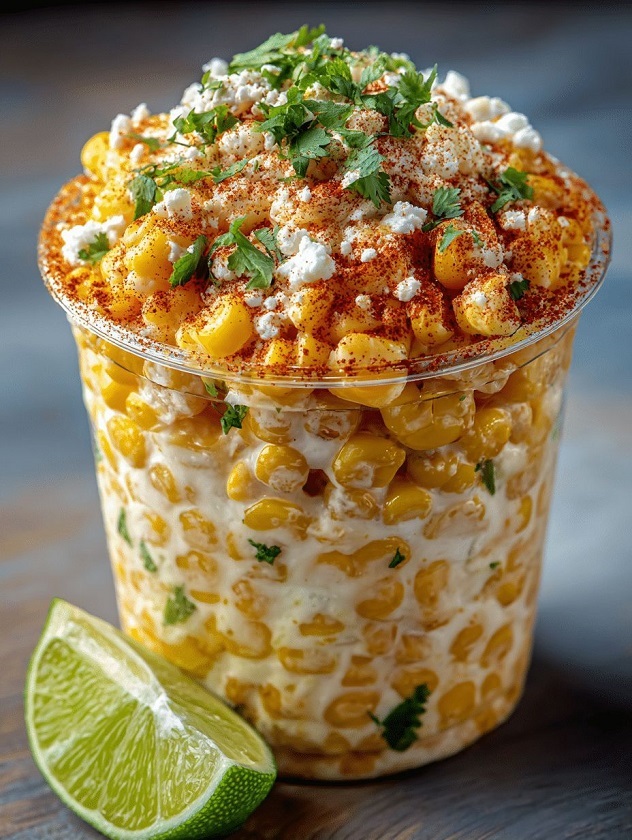
Reason 1: Authenticity and Tradition
Authentic Flavors:
One of the most compelling reasons to fall in love with Mexican street food is its deep connection to the authentic flavors of Mexico’s culinary history. Each bite offers a taste of tradition, built upon centuries of culinary evolution. The foundation of Mexican street food is simple yet incredibly flavorful, relying on fresh, local ingredients like corn, chilies, beans, cilantro, and lime. These ingredients, paired with centuries-old cooking methods, create a flavor profile that is both unique and familiar.
Street food in Mexico is often prepared in small, family-run kitchens or open-air stalls, where the focus is entirely on producing food that showcases the vibrant and diverse culture of Mexico. The smoky, spicy kick of a freshly grilled taco or the creamy, tangy notes of a classic elote reflect the authenticity that’s embedded in Mexican street food. When you take a bite, you’re not just tasting a meal—you’re tasting a rich culinary heritage passed down through generations.
Family Recipes & Generational Cooking:
Another significant aspect of Mexican street food is the way traditional recipes have been handed down through generations. For many vendors, the recipes they use are closely guarded family secrets—crafted by their grandparents or great-grandparents. These recipes often feature specific methods of preparation, unique blends of spices, and time-honored techniques that have been perfected over the years. A taco de carnitas, for example, is made using a slow-cooking method that allows the pork to become tender and flavorful, a recipe perfected by many families in Mexico.
The tamales you enjoy at a street stall might come from a recipe passed down from a grandmother who learned the art of tamale making in a small village in Mexico. For these vendors, Mexican street food is not just about selling food—it’s about keeping family traditions alive and preserving the rich culinary heritage that has been passed through the generations. These recipes are a direct connection to the past, and they help maintain the authenticity of Mexican street food, ensuring that each dish tastes just like it did in the kitchens of Mexico decades ago.
Personal Touch:
Beyond the recipes, the personal touch of street vendors plays an essential role in maintaining the authenticity of Mexican street food. Street vendors take immense pride in their craft, often spending hours preparing their food with care and dedication. Many of them have learned their trade from older family members and have honed their skills over years of practice. For these vendors, cooking isn’t just a job—it’s a passion.
They know that the flavors they create represent the heart of Mexican culture and cuisine, and this personal investment in the food they prepare shines through in every dish. Whether it’s grilling the perfect taco al pastor or adding just the right amount of spice to their salsa, these vendors approach their work with love, ensuring that each serving of Mexican street food stays true to its authentic roots. The care and attention to detail are evident in every bite, making the experience of eating Mexican street food not just about satisfying hunger, but about connecting with the culture and the people behind the food.
In the USA, where authenticity is often sought after, Mexican street food brings a refreshing sense of realness that many people crave. It’s not just about mass-produced, fast food—it’s about experiencing food made with heart and tradition. The authenticity of Mexican street food offers a direct link to Mexico’s rich history, preserving the taste and techniques of generations past while continuing to delight the palates of modern-day food lovers.
Authenticity and Tradition in Mexican street food:
| Aspect | Details |
| Authentic Flavors | Mexican street food offers a rich connection to traditional flavors, using local ingredients like corn, chilies, beans, cilantro, and lime. |
| Family Recipes & Generational Cooking | Many recipes are passed down through generations, featuring unique methods and time-honored techniques. Example: Taco de carnitas and tamales. |
| Personal Touch | Vendors take great pride in their craft, often learning from family, ensuring food is prepared with care and love, reflecting Mexican culture. |
| Cultural Connection | Mexican street food preserves the culinary heritage of Mexico, offering a direct link to its rich history, and connects modern-day food lovers with tradition. |

Reason 2: Variety of Flavors and Ingredients
Bold and Unique Flavors:
One of the standout features of Mexican street food is its incredible diversity of flavors. From the first bite, you’re met with a range of tastes that are as bold and varied as Mexico itself. The beauty of Mexican street food lies in its ability to balance contrasting flavors—spicy, savory, tangy, and even sweet—into a harmonious and satisfying experience.
For example, the kick of fiery chili in a taco or elote is perfectly counterbalanced by the cooling creaminess of avocado or the tang of lime. Whether it’s the smoky, grilled flavors of carne asada, the zesty taste of freshly made salsa, or the sweetness of a tamale, Mexican street food offers an exciting culinary adventure with every bite. The complexity of flavors isn’t just about heat—it’s about creating layers of taste that awaken the senses.
Common Ingredients:
At the heart of Mexican street food is a collection of essential ingredients that give each dish its distinct flavor. Corn, for example, is a cornerstone of Mexican cuisine, from the tortillas used in tacos to the masa in tamales. Corn is versatile, absorbing the rich flavors of meats, sauces, and salsas while providing a satisfying texture. Chilies are another key component, adding heat and depth to Mexican street food.
With over 100 varieties of chilies in Mexico, each dish can be adjusted to suit individual preferences for spice. Fresh cilantro, lime, and onions are also staples, bringing a refreshing balance to many dishes, cutting through the richness of meats and adding bright, aromatic notes. Avocados, especially in the form of guacamole, are used to bring creaminess and a mild sweetness that complements the bold flavors of Mexican street food. These ingredients are often sourced locally, ensuring freshness and a vibrant taste that is characteristic of Mexican street food.
Creative Combinations:
What sets Mexican street food apart is its endless variety of creative combinations that cater to every taste. From the ever-popular taco, filled with combinations like carne asada, al pastor, or grilled vegetables, to unique offerings like the torta (a Mexican sandwich), the possibilities are endless. The beauty of street food is its versatility—vendors often experiment with different ingredients, creating new twists on classic dishes while still staying true to traditional Mexican cooking. Take, for example, the fusion of sweet and savory in the beloved elote—grilled corn covered in chili powder, cotija cheese, and a squeeze of lime. It’s a marriage of contrasting flavors that work in perfect harmony.
Another example is the combination of crispy, fried tortillas with tender, slow-cooked meats like carnitas or barbacoa, a contrast that makes each bite of Mexican street food an exciting experience. For those who prefer something lighter, there are options like ceviche, a refreshing dish of raw fish marinated in citrus and mixed with onions, cilantro, and chilies. The sheer creativity of Mexican street food makes it an ideal choice for anyone looking to explore new flavors or find a dish that suits their personal tastes. Whether you enjoy the heat of salsa, the freshness of cilantro, or the richness of grilled meats, Mexican street food has something for everyone.
With its broad range of flavors and ingredients, Mexican street food invites everyone to experience a diverse world of tastes. From the savory, spicy tacos to the sweet and tangy treats like paletas (Mexican popsicles), these combinations create a unique and exciting culinary journey, making Mexican street food an unforgettable experience that appeals to all palates.
Variety of Flavors and Ingredients in Mexican Street Food:
| Aspect | Details |
| Bold and Unique Flavors | Mexican street food balances contrasting flavors—spicy, savory, tangy, and sweet—creating a harmonious culinary experience. Example: tacos, elote, tamales. |
| Common Ingredients | Key ingredients include corn, chilies, cilantro, lime, onions, and avocados, all of which provide rich, vibrant flavors. |
| Creative Combinations | Street vendors combine flavors like sweet and savory (elote), crispy and tender (tacos with carnitas), or fresh and zesty (ceviche). |
| Cultural Versatility | Mexican street food caters to all tastes, offering everything from hearty meats to lighter, veggie-filled options. |

Reason 3: Affordable and Accessible
Budget-Friendly:
One of the most attractive aspects of Mexican street food is its affordability. Whether you’re grabbing a quick snack or enjoying a full meal, Mexican street food offers excellent value for your money. In Mexico, street food has long been the go-to option for people seeking delicious, satisfying meals without breaking the bank. This tradition has carried over into the United States, where Mexican street food remains a budget-friendly choice for many.
Tacos, tamales, and elote are often priced at just a few dollars, allowing anyone—whether you’re a student, a busy professional, or a family on a budget—to indulge in authentic, flavorful meals. The affordability of Mexican street food makes it an attractive option for those who want to enjoy high-quality, flavorful food without the steep prices of restaurants. For many, these inexpensive street foods offer a tasty alternative to pricey fast food chains, providing much more in terms of both flavor and cultural experience.
Accessibility:
Another reason why Mexican street food has become so popular is its accessibility. In the USA, especially in urban areas, street vendors offering Mexican street food are incredibly easy to find. Cities like Los Angeles, New York, and Chicago have thriving food truck cultures where locals and tourists alike can grab tacos, quesadillas, or burritos from a vendor on almost every street corner.
This ease of access makes Mexican street food a convenient option for people who are on the go, whether they are looking for a quick lunch during their workday or a late-night snack. The presence of these vendors in busy neighborhoods, outside of stores, and near popular tourist attractions makes it easy for anyone to enjoy Mexican street food no matter where they are. Even in smaller towns, food trucks or pop-up stands offering Mexican street food are popping up, expanding the availability of these flavorful meals.
The accessibility of Mexican street food is not just about location—it’s also about the ease of ordering. With street food, you don’t need to wait for a reservation or sit down for a formal meal. Simply approach a vendor, place your order, and within minutes, you have a freshly prepared dish in hand. The quick service and convenient locations make Mexican street food a go-to option for anyone looking for a meal on the move.
Street Food as Everyday Food:
Unlike more formal dining options, Mexican street food is a part of everyday life. In Mexico, street food isn’t reserved for special occasions or weekend treats; it’s an integral part of daily life. For Mexicans, street food is often enjoyed for breakfast, lunch, or dinner, and it provides a convenient, quick, and affordable way to enjoy authentic meals.
This culture of everyday street food is now thriving in the USA, where many people are beginning to see Mexican street food as a regular part of their routine. In busy urban environments, it’s not uncommon to see people enjoying tacos or tamales on their lunch break or grabbing an elote after a long day of work. The beauty of Mexican street food is that it’s not just a luxury meal for the occasional treat—it’s a regular, accessible, and satisfying option that is always available for those who want it.
For those on a tight schedule or with limited budgets, Mexican street food offers an authentic, delicious alternative to dining at expensive restaurants or opting for low-quality fast food. With Mexican street food becoming increasingly available in various cities across the USA, people are discovering that they don’t have to compromise on taste, authenticity, or affordability. This accessibility makes Mexican street food a perfect choice for anyone looking to enjoy a meal that fits into their lifestyle, without the hassle or cost of traditional dining.
Affordability and Accessibility of Mexican Street Food:
| Aspect | Details |
| Budget-Friendly | Mexican street food offers excellent value, with affordable meals like tacos, tamales, and elote often costing just a few dollars. Ideal for people on a budget. |
| Accessibility | Street vendors are easy to find in urban areas like Los Angeles, New York, and Chicago, making Mexican street food a convenient option for those on the go. |
| Convenience | Quick service and easy ordering—simply approach a vendor, place your order, and enjoy a freshly prepared dish within minutes. |
| Everyday Food | In Mexico, street food is part of daily life, offering an affordable, quick, and satisfying meal for breakfast, lunch, or dinner. Now growing in popularity in the USA. |
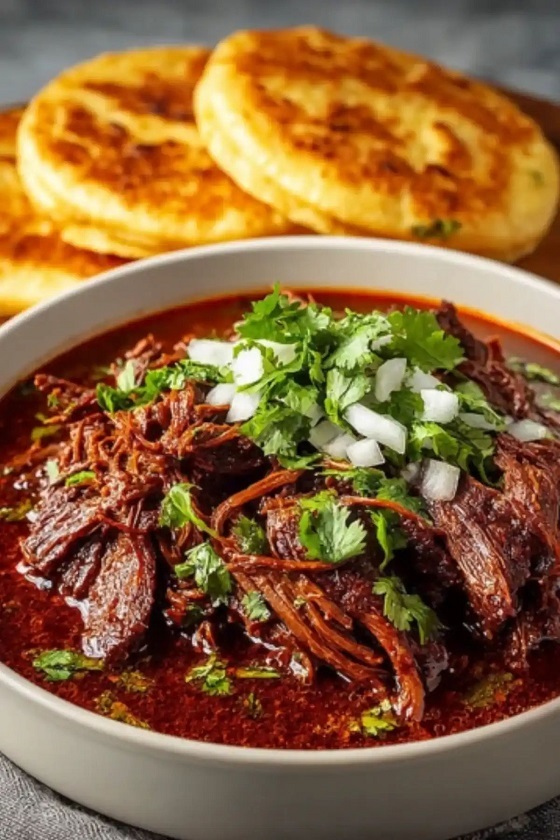
Reason 4: Quick and Convenient
Fast Service:
One of the standout features of Mexican street food is how quickly it’s served. Whether you’re grabbing a taco, tamale, or quesadilla, you can count on quick service from most street vendors. This makes Mexican street food the ideal choice for people with busy schedules who don’t have time to wait for a long sit-down meal. In many cases, the preparation time is minimal—ingredients are fresh, and the cooking methods are simple yet effective.
For instance, tacos are often assembled in minutes, with the meats already grilled and ready to be placed on a tortilla, topped with salsas, onions, and cilantro. In just a few moments, you’re holding a freshly made, flavorful meal in your hands, ready to enjoy. Mexican street food vendors understand the importance of speed without sacrificing quality, offering a delicious meal in a fraction of the time it would take at a sit-down restaurant. This quick turnaround is especially beneficial during lunch breaks, after work, or during a short stop on the go, making Mexican street food perfect for people with little time to spare.
On-the-Go Dining:
In today’s fast-paced world, Mexican street food is an incredibly convenient option for people who are always on the move. Whether you’re rushing to a meeting, picking up the kids from school, or running errands, Mexican street food is perfect for on-the-go dining. The nature of street food means you can enjoy a full meal without sitting down at a table. Tacos, for example, are designed to be handheld, making them easy to eat while walking, in your car, or even while taking a quick break at the park.
With no need for plates, utensils, or a sit-down restaurant experience, Mexican street food is all about simplicity and convenience. This makes it an attractive choice for anyone who needs a quick yet satisfying meal without slowing down their day. Whether it’s a savory taco filled with carne asada or a sweet paleta (Mexican popsicle) for dessert, you can rely on Mexican street food to deliver both convenience and flavor.
Takeout Option:
Another huge advantage of Mexican street food is its portability, making it easy to enjoy anywhere—at home, in the office, or while on the go. The flexibility of Mexican street food allows it to fit seamlessly into any lifestyle. Street food vendors often serve their dishes in convenient, easy-to-carry packaging that’s perfect for takeout. Whether you’re taking your tacos home to enjoy with friends, picking up a quick bite at the office, or grabbing a snack to enjoy while running errands, Mexican street food makes it possible to enjoy a flavorful, authentic meal without the need for a sit-down experience.
For example, food trucks and street stalls often have pre-packed meals or can quickly wrap up your food for you, so you can take it wherever you need. This is ideal for anyone looking to enjoy a meal at their convenience, making Mexican street food an excellent option for busy people who still want something delicious and fulfilling.
Additionally, with food trucks, pop-up stands, and even dedicated street corners serving Mexican street food in most urban areas, it’s easier than ever to find something tasty and ready to go. You don’t have to worry about finding parking at a crowded restaurant or waiting for a reservation; instead, you can simply walk up to a Mexican street food vendor, order, and go about your day.
Quick and Convenient nature of Mexican Street Food:
| Aspect | Details |
| Fast Service | Mexican street food offers quick service, with many dishes prepared in minutes, making it ideal for busy people. |
| On-the-Go Dining | Street food is easy to eat on the go, with handheld items like tacos and popsicles, perfect for a quick meal during a busy day. |
| Takeout Option | Mexican street food is portable, served in easy-to-carry packaging, making it convenient to enjoy anywhere—at home, in the office, or while running errands. |
| Convenience | Food trucks and street vendors offer easy access to freshly prepared meals, saving time without the need for reservations or long waits. |
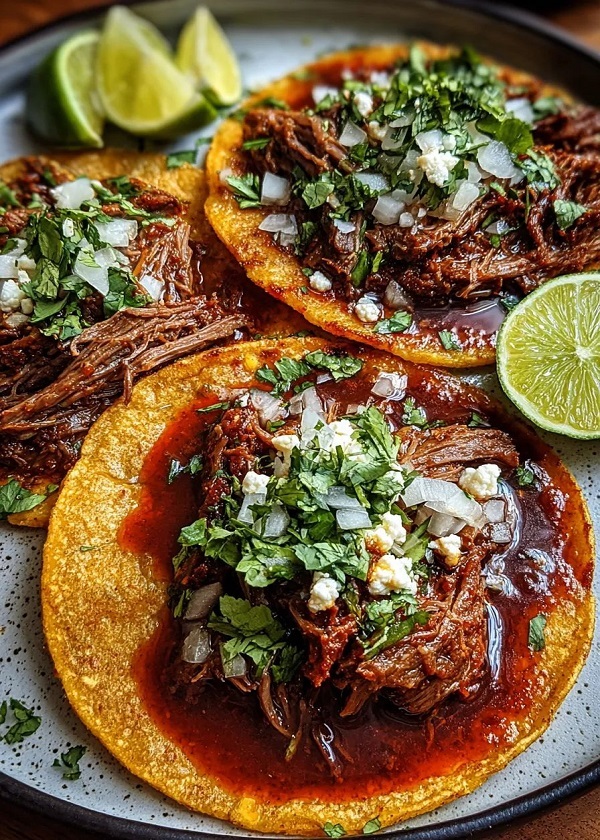
Reason 5: The Social Experience
Street Food as a Social Event:
One of the most unique aspects of Mexican street food is its role in creating a communal dining experience. In Mexico, street food is more than just a meal; it’s a social event. Whether it’s a group of friends gathering to share tacos or a family enjoying elote on a warm evening, Mexican street food fosters a sense of togetherness. Eating from a street vendor often involves sharing not only the food but also the experience itself.
People gather around food carts, chatting with each other while savoring dishes like tacos de pastor, quesadillas, or tamales, all served in generous portions designed to be enjoyed with others. This communal aspect is integral to Mexican street food—it’s not just about feeding your hunger, but about bonding with those around you over delicious food.
In the USA, this aspect of street food has translated well, especially in cities with large Mexican communities or vibrant food truck cultures. Mexican street food brings people together from all walks of life, offering an opportunity to enjoy great food in a relaxed, unpretentious environment. Whether it’s gathering around a food truck with friends or enjoying a casual meal at a street food festival, the experience of eating Mexican street food is often about more than just satisfying your appetite—it’s about sharing a moment with those around you.
Vibrant Atmosphere:
Part of the charm of Mexican street food lies in the vibrant, colorful atmosphere surrounding the vendors. As you approach a food cart or truck, the sights, sounds, and smells immediately captivate your senses. Vendors often create a lively, welcoming space where the hustle and bustle of the city meets the vibrant energy of Mexican culture. The bright colors of food trucks, the sizzling sounds of meat on the grill, and the lively chatter of customers all contribute to the experience.
The environment around Mexican street food vendors is typically filled with music, laughter, and the mingling of people from different walks of life. This festive energy is infectious, turning the simple act of grabbing a quick bite into a joyful and lively experience.
The food itself plays a major role in this atmosphere, too. From the bright red salsa to the golden corn on the cob slathered with mayo and cheese, the visual appeal of Mexican street food adds to the experience. The way food is served—often in colorful paper cones, tortillas wrapped around vibrant fillings, or topped with fresh garnishes—adds to the visual feast that complements the tastes. The entire experience is designed to appeal to all your senses, making Mexican street food more than just food—it’s a celebration of culture, flavor, and community.
Building Connections:
Food has always had the power to bring people together, and Mexican street food is no exception. Sharing a meal with friends or strangers alike fosters a sense of connection, and the communal nature of street food makes it easy to bond over a delicious dish. As you stand in line waiting for your tacos or sip on a freshly made agua fresca, it’s easy to strike up a conversation with the person next to you, whether you’re complimenting the food or sharing tips on the best salsas.
This sense of community is something that Mexican street food embraces and encourages. It’s a food culture where strangers become friends over a shared love of tacos or where families come together over a plate of quesadillas.
In cities across the USA, Mexican street food has played a role in bridging cultures, offering an opportunity for people to connect through a universal love of great food. It’s often the first exposure many people have to Mexican culture, and as a result, it brings together diverse communities, fostering understanding and appreciation through food.
The Social Experience of Mexican Street Food:
| Aspect | Details |
| Street Food as a Social Event | Mexican street food is more than just food; it’s a communal experience where friends and family gather to bond over flavorful dishes like tacos and tamales. |
| Vibrant Atmosphere | The lively, colorful atmosphere around street vendors, with music, sizzling sounds, and colorful foods, creates a festive and joyful dining experience. |
| Building Connections | Sharing a meal with strangers or friends fosters a sense of community, turning an ordinary meal into a moment of cultural connection. |
| Cultural Bridge | Mexican street food serves as a way to connect diverse communities, helping to foster understanding and appreciation of Mexican culture. |
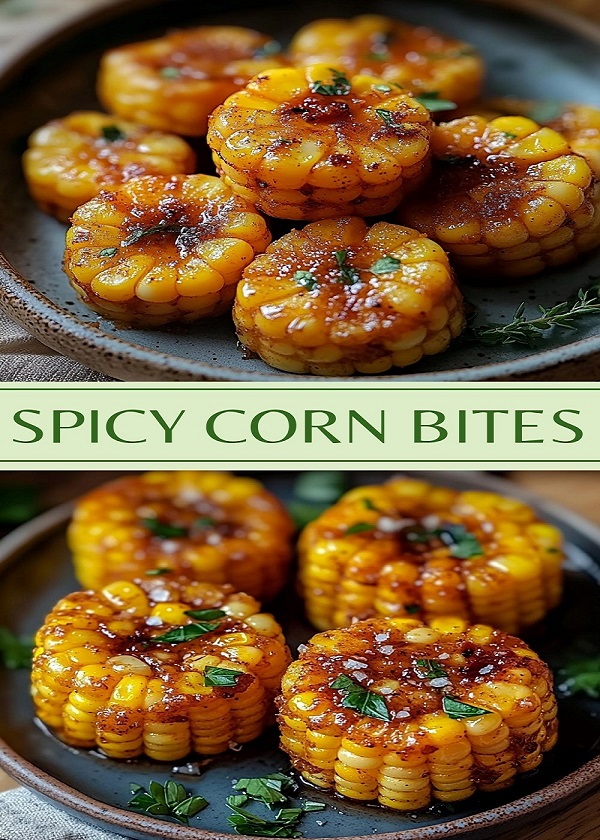
Reason 6: It’s a Flavor Adventure
Exploring New Tastes:
For food lovers seeking a new and exciting culinary experience, Mexican street food offers an unforgettable adventure. Unlike more traditional restaurant meals, street food allows you to explore bold, diverse flavors that you might not find elsewhere. Whether you’re enjoying the spicy kick of a salsa roja or the smoky flavors of grilled meats, Mexican street food invites you to step out of your culinary comfort zone. It’s about tasting the unexpected—like biting into a taco topped with tangy pineapple or trying a new variety of chili you’ve never encountered before.
Each dish is an opportunity to explore something different. For example, the simple yet flavorful taco de lengua (beef tongue) may seem unusual, but once you taste the tender meat with its rich, savory flavors, you’ll quickly realize why it’s beloved in Mexico. Or consider the experience of tasting fresh ceviche, marinated in citrus and mixed with cilantro, onions, and chili—its refreshing tang will surprise your taste buds in the best way. These types of experiences are what make Mexican street food a true flavor adventure. It encourages you to embrace the unfamiliar and discover exciting tastes that will leave you craving more.
Fusion of Regional Dishes:
One of the most fascinating aspects of Mexican street food is how it reflects the rich diversity of Mexico’s regional cuisine. Mexico is a country with a deep history of regional food traditions, and each area offers unique ingredients, flavors, and cooking methods. As a result, Mexican street food is far from one-dimensional—it’s a collection of culinary delights from various parts of the country, each contributing its own flair.
For example, in the north of Mexico, you might find tacos filled with grilled meats such as carne asada or chorizo, while in the Yucatán region, cochinita pibil, a slow-cooked pork dish, takes center stage. In coastal regions, you can sample seafood-based street food, like fish tacos or ceviche, which offer a fresh and zesty taste of the ocean. The variety of regional street foods ensures that there’s always something new to try, whether you’re craving the smoky flavors of the north or the fresh, citrusy dishes of the coast.
This fusion of regional dishes in Mexican street food offers a broader culinary adventure than most people expect. Each time you try a new street food vendor, you’re introduced to different ingredients and techniques, allowing you to experience the diverse tastes of Mexico without leaving your city. This variety makes Mexican street food a constantly evolving and exciting experience for anyone willing to explore.
Food Culture of Mexico:
The heart of Mexican street food lies in its reflection of Mexico’s food culture, which is as diverse as the country itself. Mexican cuisine has been shaped by centuries of history, from indigenous civilizations to Spanish influences, and the result is a culinary tradition that is rich, complex, and full of character. Mexican street food is a reflection of this history, showcasing everything from pre-Hispanic ingredients like maize (corn) and beans to the influence of European spices and cooking techniques.
Street food in Mexico isn’t just about what you eat—it’s about experiencing the culture, the stories, and the people behind the food. Every dish tells a story. For example, the traditional preparation of tamales, wrapped in corn husks and steamed to perfection, is a practice that dates back to the ancient Aztecs. Similarly, the variety of salsas served with tacos or grilled meats reflects the rich diversity of chilies and herbs grown across the country. Mexican street food captures the essence of Mexico’s culinary history, offering a direct connection to the country’s vibrant food culture.
By indulging in Mexican street food, you’re not just tasting food—you’re participating in a cultural journey. It’s a way of immersing yourself in Mexico’s rich food history, understanding the regional influences, and appreciating the unique flavors that have developed over centuries. The diversity of Mexican street food offers a flavor adventure that goes beyond the food itself, allowing you to experience the essence of Mexico’s food culture in every bite.
It’s a Flavor Adventure in Mexican Street Food:
| Aspect | Details |
| Exploring New Tastes | Mexican street food offers bold and diverse flavors, encouraging you to step out of your comfort zone with dishes like tacos de lengua or fresh ceviche. |
| Fusion of Regional Dishes | Reflects Mexico’s regional diversity, with specialties like carne asada from the north, cochinita pibil from Yucatán, and seafood dishes from coastal areas. |
| Food Culture of Mexico | A journey through Mexico’s rich culinary history, from pre-Hispanic ingredients like maize to the influence of Spanish spices, making each dish a cultural experience. |
| Culinary Adventure | Mexican street food invites you to explore new ingredients, techniques, and flavors, offering an exciting, ever-evolving food experience. |
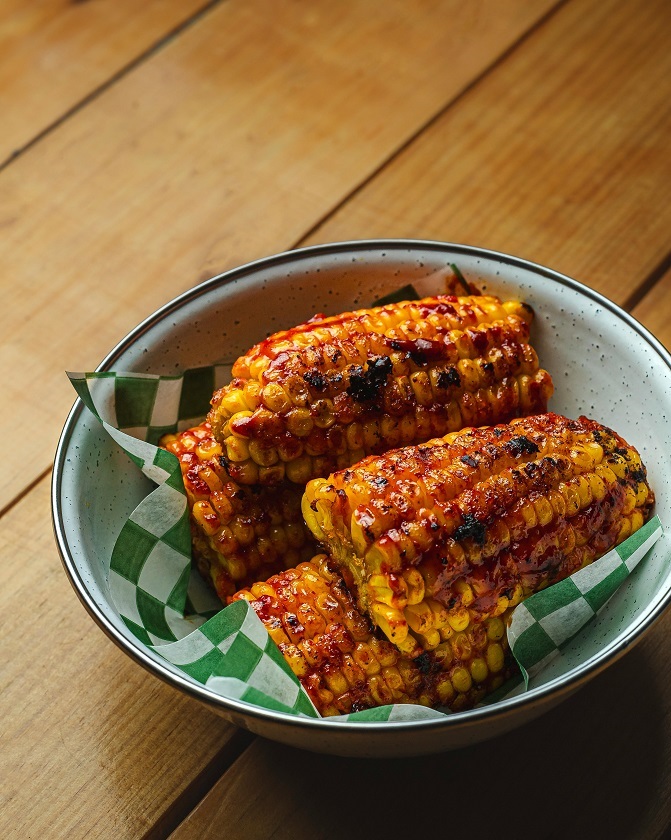
Reason 7: Healthier Alternatives
Fresh Ingredients:
One of the reasons Mexican street food is increasingly being recognized as a healthier dining option is its emphasis on fresh, natural ingredients. Many of the dishes are made with locally sourced vegetables, fruits, and herbs, ensuring that you’re getting a wholesome and flavorful meal. Ingredients like cilantro, onions, tomatoes, avocados, and limes are frequently used in Mexican street food, providing essential vitamins and antioxidants. The use of fresh produce is not only a hallmark of authenticity but also contributes to the nutritional value of the dishes.
For example, the vibrant salsas served alongside tacos or quesadillas are often made from fresh tomatoes, chili peppers, and garlic, all of which have known health benefits. The use of fresh limes adds a burst of vitamin C, while avocados—used in guacamole or as a topping—are packed with healthy fats that promote heart health. These fresh, natural ingredients are a defining feature of Mexican street food, helping to create flavorful, yet nutritious dishes that are far from the processed alternatives often found in fast food chains.
Healthier Options:
While Mexican street food is famous for its rich, indulgent flavors, many dishes offer healthier options, especially when compared to traditional fast food. Grilled meats, such as carne asada (grilled beef) and pollo asado (grilled chicken), are common in Mexican street food and offer lean protein without the added fats that come with fried foods. These meats are typically seasoned with natural herbs and spices like cumin, garlic, and oregano, adding flavor without unnecessary calories.
In addition to grilled meats, Mexican street food offers a variety of vegetable-based options that can easily fit into a healthier lifestyle. Tacos filled with sautéed mushrooms, roasted vegetables, or nopal (cactus) are popular choices for those looking for a lighter, plant-based alternative. Many of these veggie options are rich in fiber, vitamins, and minerals, making them a great choice for anyone aiming to boost their vegetable intake.
Another healthy option in Mexican street food is ceviche—a dish made with raw fish or shrimp marinated in citrus juice. The acidity of lime and orange not only enhances the flavor but also helps “cook” the seafood, keeping it light and fresh. Ceviche is typically served with fresh vegetables like onions, cilantro, and tomatoes, creating a healthy and refreshing dish that’s low in calories but high in nutrients.
Balance and Moderation:
The beauty of Mexican street food lies in its ability to be enjoyed as part of a balanced, healthy diet when chosen wisely. While it’s true that some Mexican street food dishes can be indulgent—like fried churros or cheesy quesadillas—it’s easy to make healthier choices without sacrificing flavor. For example, opting for a taco with grilled chicken and plenty of fresh toppings like lettuce, salsa, and avocado can provide a satisfying and nutrient-dense meal that’s lower in calories than a fried or cheesy option.
The key to enjoying Mexican street food as part of a healthy lifestyle is balance and moderation. The portion sizes are often small and customizable, allowing you to choose lighter options while still savoring the delicious flavors of Mexican cuisine. Pairing a taco with a side of fresh fruit or a vegetable-filled quesadilla ensures that your meal has a good balance of protein, fiber, and healthy fats. In addition, the focus on fresh, whole ingredients means you can enjoy Mexican street food without the guilt of processed ingredients or artificial additives.
Healthier Alternatives in Mexican Street Food:
| Aspect | Details |
| Fresh Ingredients | Mexican street food uses fresh, natural ingredients like cilantro, tomatoes, avocados, and limes, providing essential vitamins and antioxidants. |
| Healthier Options | Grilled meats (carne asada, pollo asado) and plant-based options (e.g., tacos with sautéed mushrooms, nopal) offer lean protein and fiber-rich alternatives. |
| Ceviche | Ceviche, made with raw fish or shrimp marinated in citrus juice, is a refreshing and nutrient-packed, low-calorie dish. |
| Balance and Moderation | Choose lighter options like grilled chicken tacos with fresh toppings, paired with sides of fruit or vegetables, ensuring a balanced, healthy meal. |
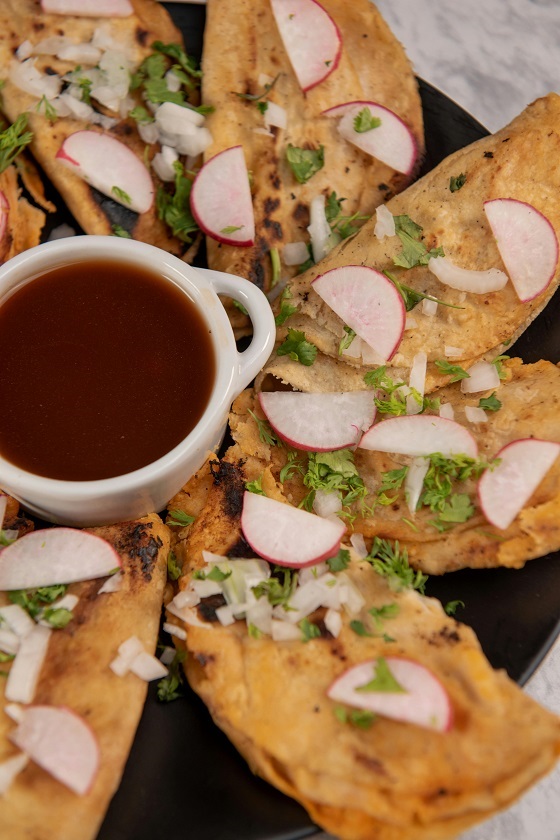
How Mexican Street Food Is Making Its Mark in the USA
Increasing Popularity:
Over the past few decades, Mexican street food has experienced a meteoric rise in popularity across the United States. What was once a regional delicacy, largely enjoyed by Mexican communities, has now become a beloved culinary trend nationwide. The growth of food trucks and street food vendors has played a significant role in bringing Mexican street food into the mainstream.
Cities like Los Angeles, New York, and Chicago have seen the emergence of vibrant food truck scenes where tacos, burritos, and other street food staples are served to eager customers. These food trucks offer a more accessible and casual dining experience, making Mexican street food available to people of all backgrounds, not just those with a deep connection to Mexican culture.
Moreover, many brick-and-mortar restaurants across the USA have embraced Mexican street food, incorporating it into their menus to cater to the growing demand. These establishments often recreate the street food experience by offering traditional favorites like tacos de carnitas, al pastor, and tamales, but with a more modern twist. The increasing presence of Mexican street food in both food trucks and restaurants shows that it is no longer a niche or exotic option—it has become a mainstream culinary trend.
Influence of Food Trends:
The popularity of Mexican street food can be attributed, in part, to the growing interest in food culture and the demand for authenticity. In today’s world, where food trends are more accessible and well-documented through social media and food blogs, people are increasingly seeking out authentic and culturally rich culinary experiences. This desire for authenticity has fueled the popularity of Mexican street food, as it offers a direct connection to Mexico’s diverse culinary heritage.
Consumers are no longer just looking for meals that taste good; they are also looking for food that tells a story and reflects a culture. Mexican street food offers just that—a chance to experience the vibrant flavors and traditions that have been passed down through generations. The rise of social media platforms like Instagram has further amplified the allure of Mexican street food, as food enthusiasts share images of colorful tacos, vibrant salsas, and mouth-watering elote. As food culture evolves, Mexican street food has become a symbol of both authenticity and adventure, attracting food lovers eager to explore new tastes and experiences.
Fusion with American Taste:
As Mexican street food has become more popular in the USA, many vendors have found creative ways to adapt and fuse traditional Mexican flavors with American tastes. This fusion has helped make Mexican street food even more appealing to a broader audience. For example, tacos, once a simple street food served with basic fillings, have evolved in some American cities to include new and inventive combinations. In places like California, fusion tacos might feature fillings like Korean BBQ, shrimp tempura, or even fried chicken, offering a unique twist on the traditional Mexican taco.
Similarly, some Mexican street food vendors have adapted their offerings to cater to the American preference for larger portion sizes. While tacos in Mexico are typically served in smaller portions, some American versions are stuffed with more ingredients, such as cheese, guacamole, and extra toppings, to create a heartier meal. Additionally, the classic taco stand may now offer nachos loaded with all kinds of toppings, burrito bowls, or quesadillas filled with non-traditional ingredients like pulled pork or mac and cheese, further blurring the lines between Mexican street food and American comfort food.
Mexican Street Food is Making Its Mark in the USA:
| Aspect | Details |
| Increasing Popularity | Mexican street food has surged in popularity across the USA, with food trucks and restaurants offering traditional favorites like tacos and tamales. |
| Influence of Food Trends | Social media and a growing interest in authenticity have fueled the rise of Mexican street food, with food lovers seeking culturally rich experiences. |
| Fusion with American Taste | Many vendors have creatively fused Mexican flavors with American preferences, such as Korean BBQ tacos or larger portions, making Mexican street food more accessible. |
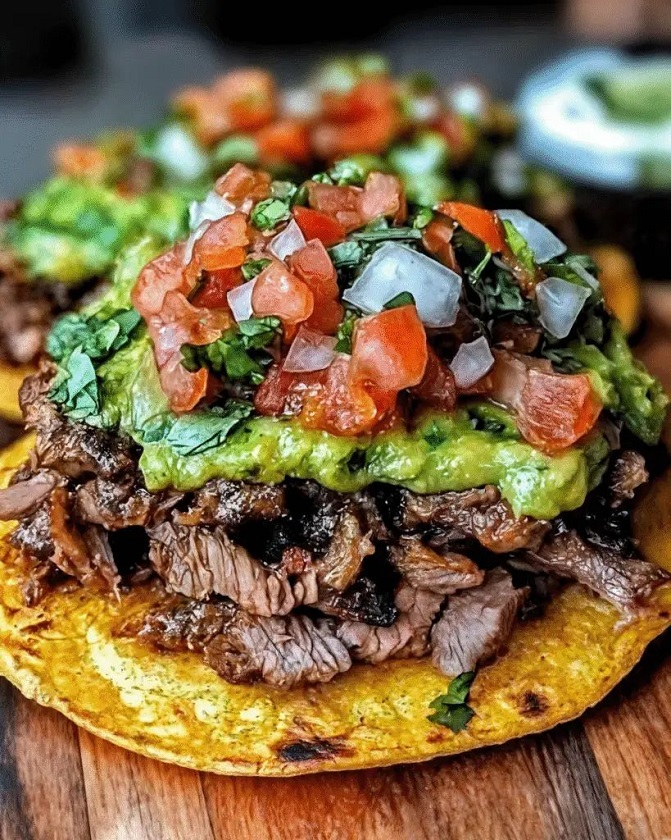
Conclusion:
In this article, we’ve explored seven compelling reasons why Mexican street food deserves a place in your heart and on your plate. From its authenticity and cultural significance to its bold, diverse flavors, Mexican street food offers an exciting culinary adventure for anyone willing to explore. The use of fresh ingredients, the variety of flavors, and the affordability and accessibility make it a practical and delicious option for every occasion.
The social aspect of Mexican street food—shared among friends, family, and strangers alike—creates an experience that goes beyond just eating. Add to that the opportunity to try new and exciting dishes, and you have a food culture that has something for everyone. Lastly, the healthier alternatives and its increasing popularity in the USA only enhance Mexican street food‘s appeal, making it a vibrant part of modern dining.
If you haven’t yet experienced the magic of Mexican street food, it’s time to give it a try. Whether you’re enjoying tacos from a local food truck or visiting a street vendor during your travels, there’s an entire world of flavor waiting for you. Don’t be afraid to step outside your culinary comfort zone—whether it’s the heat of a salsa or the richness of a tamale, Mexican street food offers a wide range of tastes to suit any palate. Go ahead and explore the options available near you, and share your experience with friends and family.Maybe you may find a new favorite food!
:
At its core, Mexican street food is about more than just satisfying hunger—it’s about celebrating community, culture, and the joy of sharing a meal. Street food, in general, has the power to bring people together, breaking down barriers and fostering connection. It’s a window into the heart of a culture, offering not only a taste of its flavors but also a taste of its history and traditions.
As you explore the world of Mexican street food, you’ll find that it enriches your food experience, opening doors to new tastes, new cultures, and new friendships. So next time you’re hungry, take a step toward something new and try Mexican street food—you might just find that it’s the connection you’ve been craving.
FAQs:
1. What is Mexican street food?
Answer: Mexican street food refers to a variety of traditional dishes sold by vendors on the streets, often served in casual, portable formats. It includes tacos, tamales, quesadillas, elote, and more, made with fresh, local ingredients and prepared right in front of you.
2. Why is Mexican street food so popular?
Answer: Mexican street food is popular because of its bold flavors, affordability, accessibility, and cultural significance. It offers a quick, authentic, and satisfying meal that connects people to Mexico’s culinary history and diverse regional traditions.
3. What are some classic Mexican street food dishes?
Answer: Classic Mexican street food dishes include tacos (with various fillings like carne asada, al pastor, and carnitas), tamales, elote (grilled corn on the cob), quesadillas, tortas, and churros.
4. What makes Mexican street food different from regular Mexican food?
Answer: Mexican street food is typically served in smaller, more casual portions, often meant to be eaten quickly on the go. It focuses on fresh, accessible ingredients and reflects the regional variations of Mexican cuisine, while regular Mexican food may be more formal and elaborate.
5. Is Mexican street food healthy?
Answer: Mexican street food can be healthy when made with fresh, natural ingredients. Dishes like tacos with grilled meats, ceviche, and vegetable-based options like nopal (cactus) are nutrient-dense and low in calories. However, some options, like fried foods or cheesy quesadillas, are richer and should be enjoyed in moderation.
6. What are the most popular toppings for tacos in Mexican street food?
Answer: Common taco toppings include cilantro, onions, salsa (often varying in heat and flavor), lime, and avocado. Some tacos may also be topped with crumbled cheese, radishes, or pickled vegetables for added flavor.

